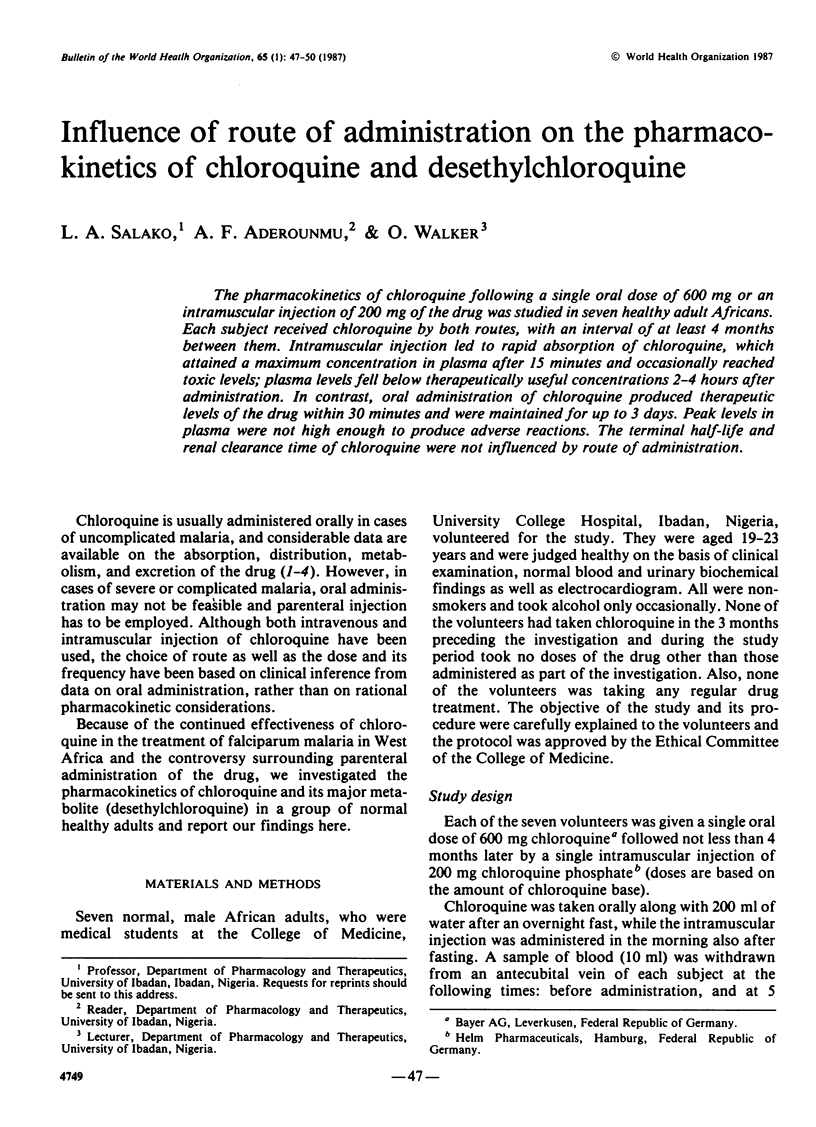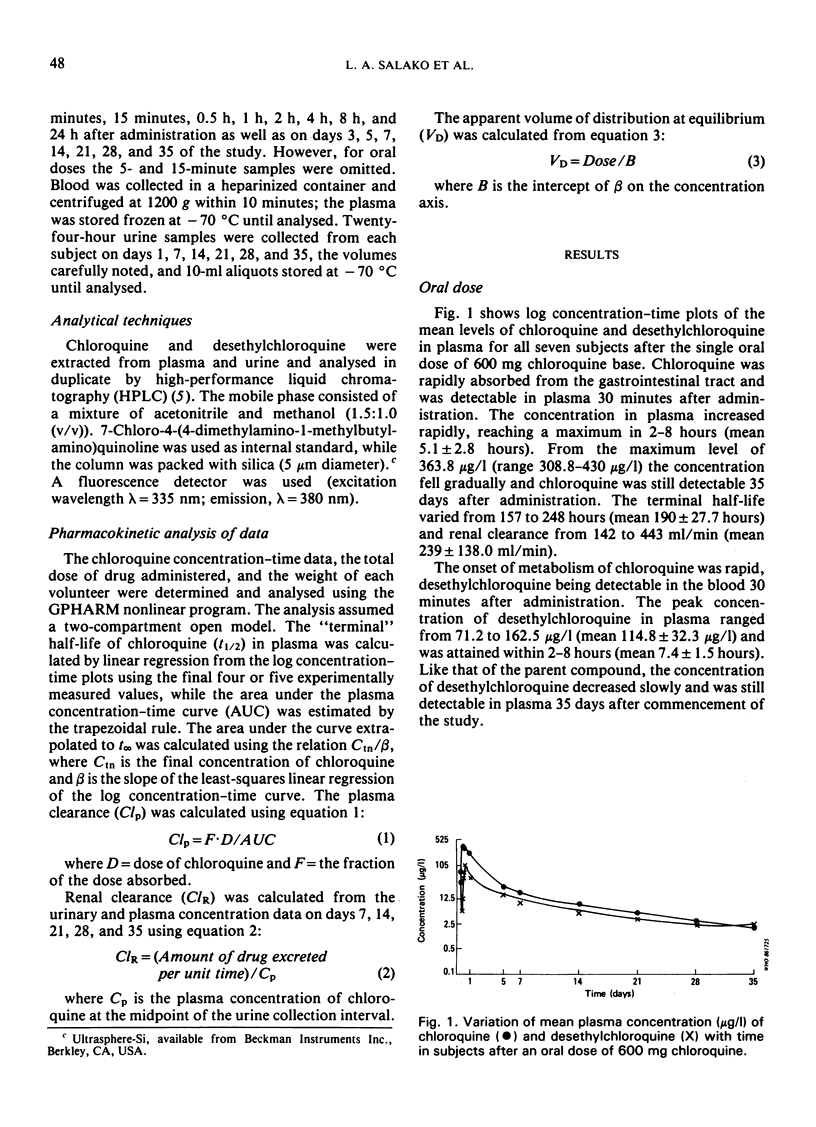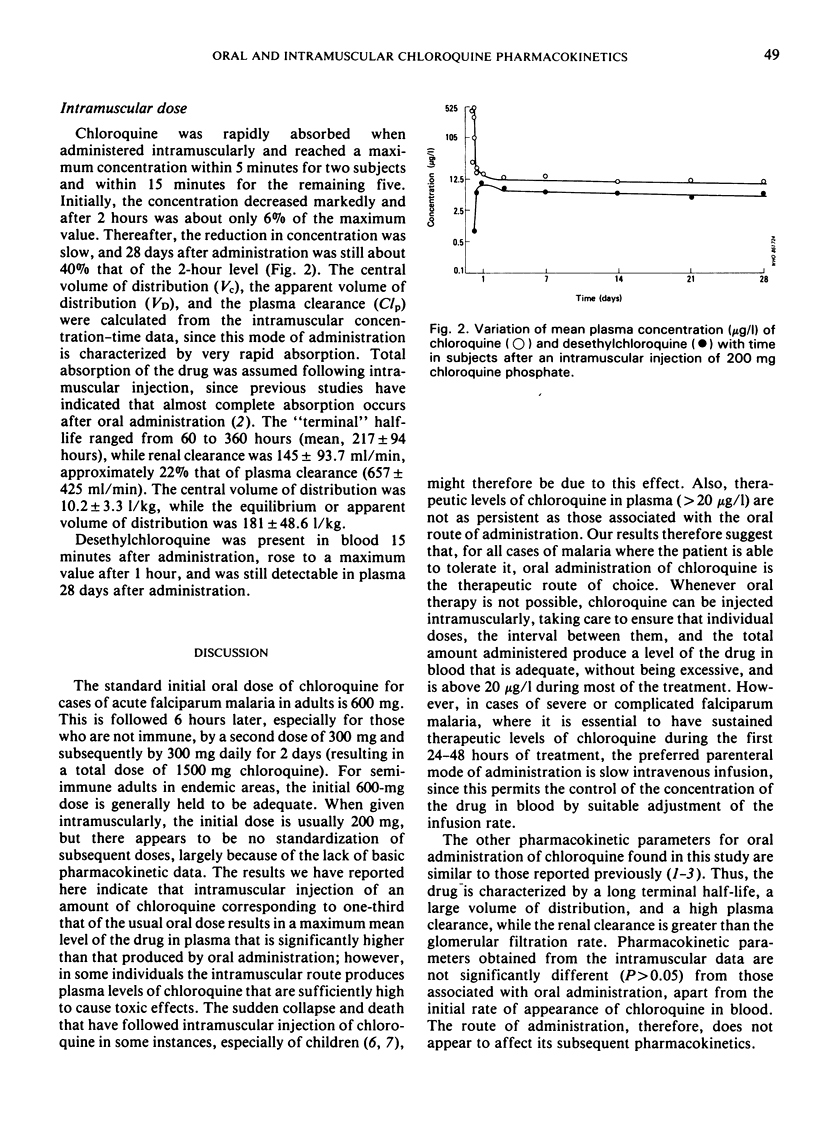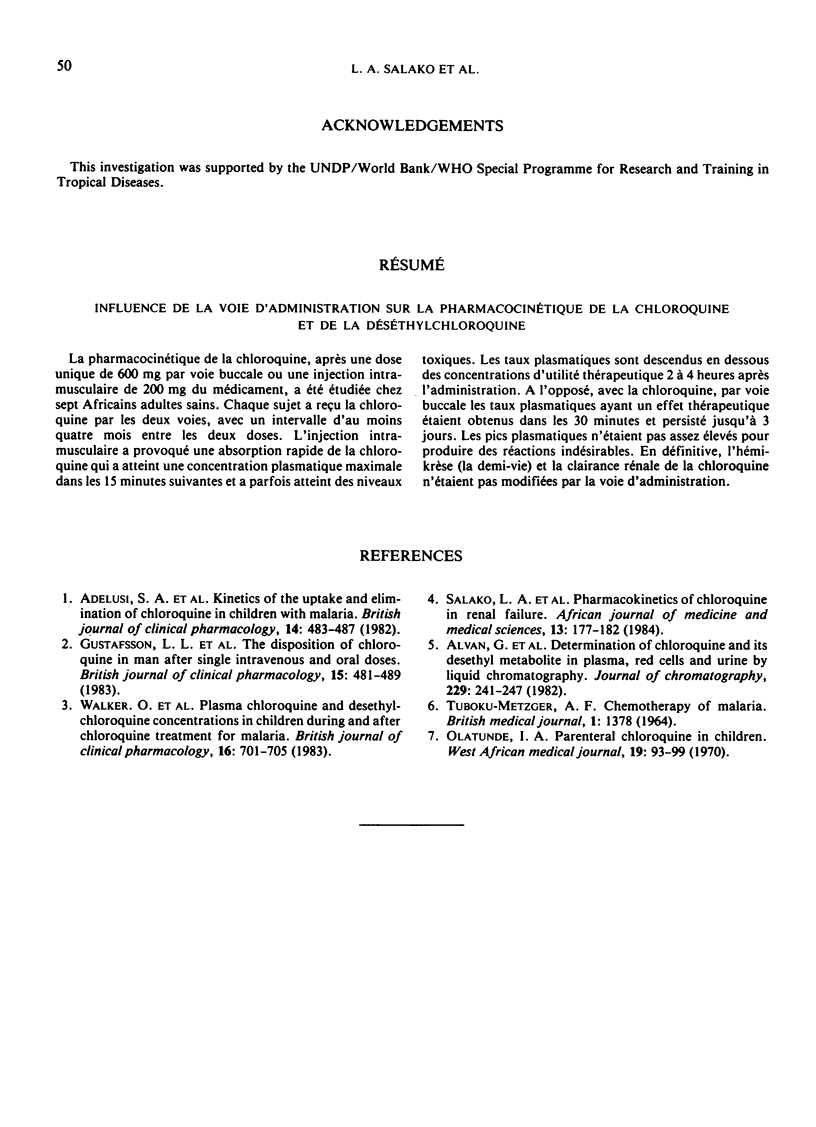Abstract
The pharmacokinetics of chloroquine following a single oral dose of 600 mg or an intramuscular injection of 200 mg of the drug was studied in seven healthy adult Africans. Each subject received chloroquine by both routes, with an interval of at least 4 months between them. Intramuscular injection led to rapid absorption of chloroquine, which attained a maximum concentration in plasma after 15 minutes and occasionally reached toxic levels; plasma levels fell below therapeutically useful concentrations 2-4 hours after administration. In contrast, oral administration of chloroquine produced therapeutic levels of the drug within 30 minutes and were maintained for up to 3 days. Peak levels in plasma were not high enough to produce adverse reactions. The terminal half-life and renal clearance time of chloroquine were not influenced by route of administration.
Full text
PDF



Selected References
These references are in PubMed. This may not be the complete list of references from this article.
- Adelusi S. A., Dawodu A. H., Salako L. A. Kinetics of the uptake and elimination of chloroquine in children with malaria. Br J Clin Pharmacol. 1982 Oct;14(4):483–487. doi: 10.1111/j.1365-2125.1982.tb02016.x. [DOI] [PMC free article] [PubMed] [Google Scholar]
- Alván G., Ekman L., Lindström B. Determination of chloroquine and its desethyl metabolite in plasma, red blood cells and urine by liquid chromatography. J Chromatogr. 1982 Apr 16;229(1):241–247. doi: 10.1016/s0378-4347(00)86059-4. [DOI] [PubMed] [Google Scholar]
- Olatunde I. A. Parenteral chloroquine in children. West Afr Med J. 1970 Jun;19(3):93–99. [PubMed] [Google Scholar]
- Walker O., Dawodu A. H., Adeyokunnu A. A., Salako L. A., Alvan G. Plasma chloroquine and desethylchloroquine concentrations in children during and after chloroquine treatment for malaria. Br J Clin Pharmacol. 1983 Dec;16(6):701–705. doi: 10.1111/j.1365-2125.1983.tb02244.x. [DOI] [PMC free article] [PubMed] [Google Scholar]


